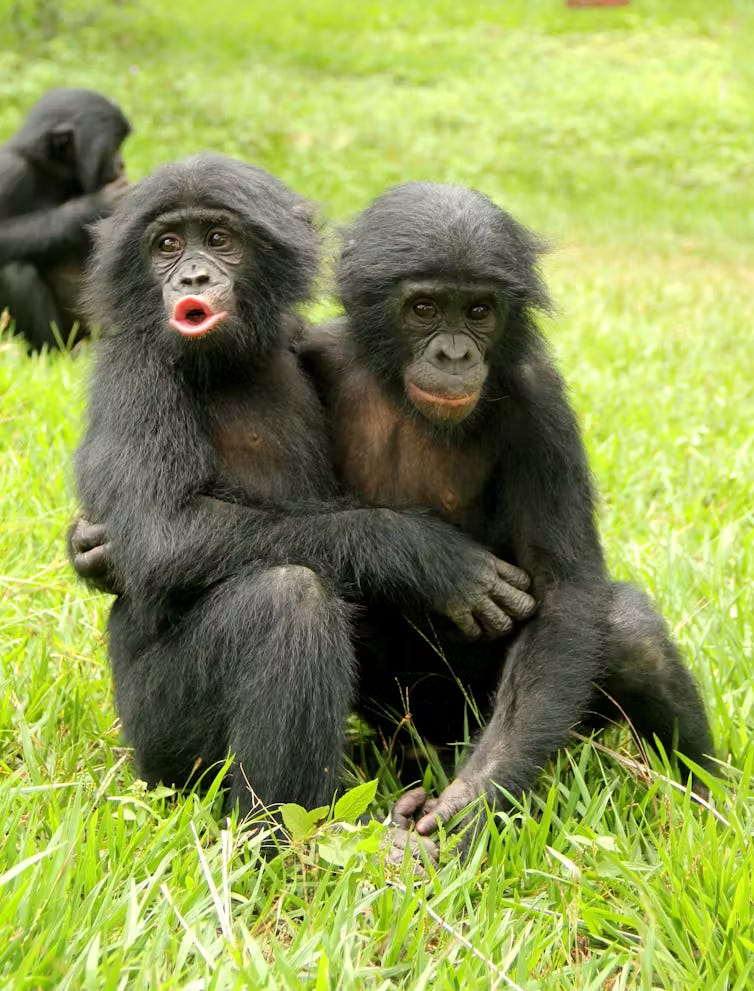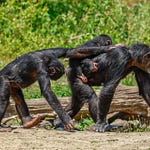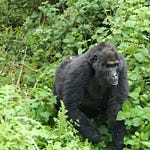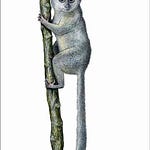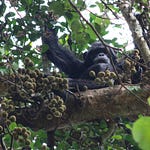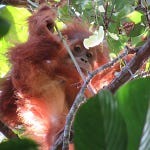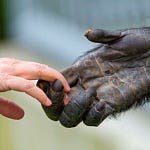The Myth of the Gentle Bonobo and the Brutal Chimp
For decades, anthropologists and primatologists have painted chimpanzees and bonobos with broad, opposing strokes. Chimpanzees—the war-makers, competitive and hierarchical. Bonobos—the peace-loving egalitarians, matriarchal and sexually cooperative. This narrative has persisted not only in scientific literature but in popular imagination, shaping how we talk about aggression, empathy, and what it means to be human.
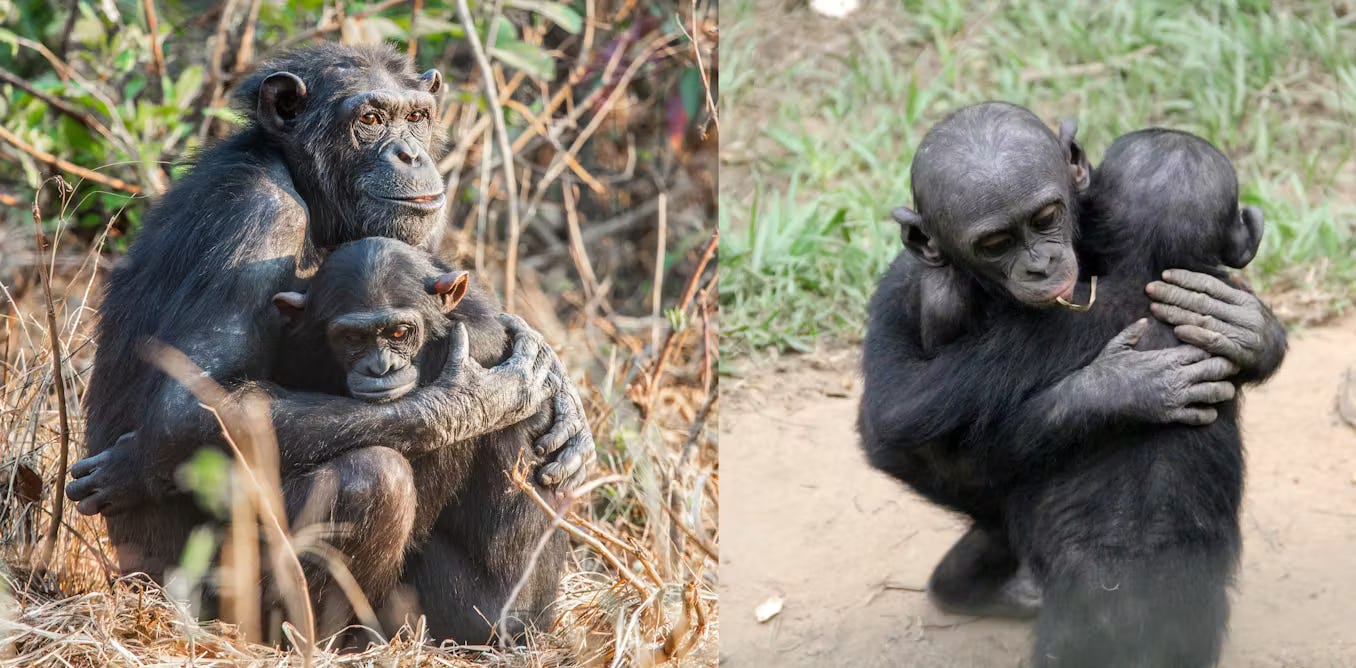
But a new study published in Evolution and Human Behavior1 suggests these distinctions might be more stereotype than science. Researchers comparing acts of consolation in bonobos and chimpanzees found that within-species variation—differences among individuals in the same species—was more significant than differences between the two species themselves.
“We found that individual characteristics such as age, sex, and social bonds played a larger role in predicting whether apes offered consolation than species identity,” the authors write.
In other words, empathy isn’t a bonobo trait. It’s an ape trait—and one that plays out differently depending on context and community.
Consolation in the Forest
The researchers, led by primatologists Janie Brooker and Zanna Clay, conducted their fieldwork at two African sanctuaries: Chimfunshi Wildlife Orphanage in Zambia for chimpanzees and Lola ya Bonobo Sanctuary in the Democratic Republic of Congo for bonobos. The settings allowed them to study both apes in large, semi-wild social groups under comparable conditions over an eight-month period.
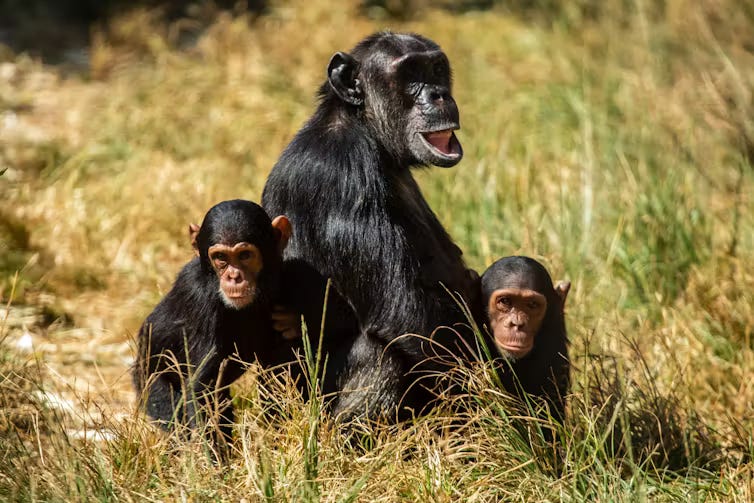
Across 336 conflicts, the team observed 285 instances of consolation: behaviors like embracing, touching, or sitting close to a distressed individual—often within seconds of the event. They recorded who gave comfort, who received it, and the social dynamics that surrounded each act.
Juveniles were the most consistent consolers in both species. Among chimpanzees, young males and individuals with strong social bonds were particularly likely to comfort others. Among bonobos, younger apes again led the way, often consoling peers they regularly interacted with.
“This shows that empathy-related behaviors are deeply embedded in ape social life,” the researchers note, “and that they emerge early in development, similar to patterns observed in human children.”
Moving Beyond Ape Archetypes
These findings challenge the entrenched view that bonobos are inherently more empathetic than chimpanzees. Instead, both species appear capable of consolation, and the expression of that empathy is shaped by individual personalities, relationships, and broader social contexts.
This insight parallels growing recognition in human psychology: empathy is not fixed. It's flexible, learned, and influenced by culture and social environment. Like humans, apes appear to express care not because of what species they are, but because of who they are.
“These findings invite a reassessment of simplistic species-level labels,” says the team. “Rather than treating bonobos and chimpanzees as polar opposites, we should view them as socially complex beings with overlapping capacities for empathy.”
Why It Matters for Human Evolution
Understanding consolation among Pan species—Pan troglodytes (chimpanzees) and Pan paniscus (bonobos)—is not just about appreciating their emotional lives. It also helps anthropologists and evolutionary scientists reconstruct the emotional landscape of our shared ancestors.
Given that both species, despite their differences, exhibit similar levels of consolatory behavior, it's likely that this ability predates the evolutionary split between humans and other great apes, possibly emerging over six million years ago.
“Empathy is not a modern human invention,” says the team. “It is a legacy of deep evolutionary ancestry.”
Final Thoughts
The study is part of a growing body of research showing that the lines between "violent chimps" and "peaceful bonobos" are more blurred than once believed. It’s a reminder that both species contain multitudes—just as we do.
If there’s a lesson here for humans, it may be this: empathy isn’t destiny, but opportunity. Like our ape cousins, we inherit the potential for compassion—but how we express it depends on who we are, who we’re with, and what kind of world we build together.
Related Research
de Waal, F. B. M. (2008). The Age of Empathy: Nature's Lessons for a Kinder Society. Harmony Books.
Clay, Z., de Waal, F. B. M. (2013). Bonobos respond to distress in others: Consolation across the age spectrum. PLoS ONE, 8(1), e55206. https://doi.org/10.1371/journal.pone.0055206
Preston, S. D., & de Waal, F. B. M. (2002). Empathy: Its ultimate and proximate bases. Behavioral and Brain Sciences, 25(1), 1–20. https://doi.org/10.1017/S0140525X02000018
Lonsdorf, E. V., Eberly, L. E., & Pusey, A. E. (2004). Sex differences in learning in chimpanzees. Nature, 428, 715–716. https://doi.org/10.1038/428715a
Brooker, J. S., Webb, C. E., Kordon, S., de Waal, F. B. M., & Clay, Z. (2025). Within-species variation eclipses between-species differences in Pan consolation. Evolution and Human Behavior: Official Journal of the Human Behavior and Evolution Society, 46(3), 106682. https://doi.org/10.1016/j.evolhumbehav.2025.106682


